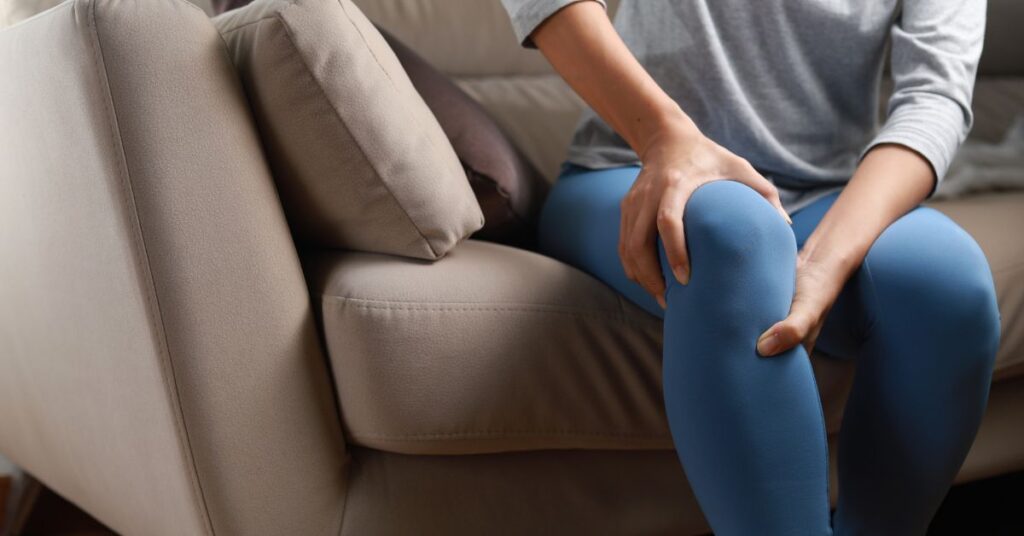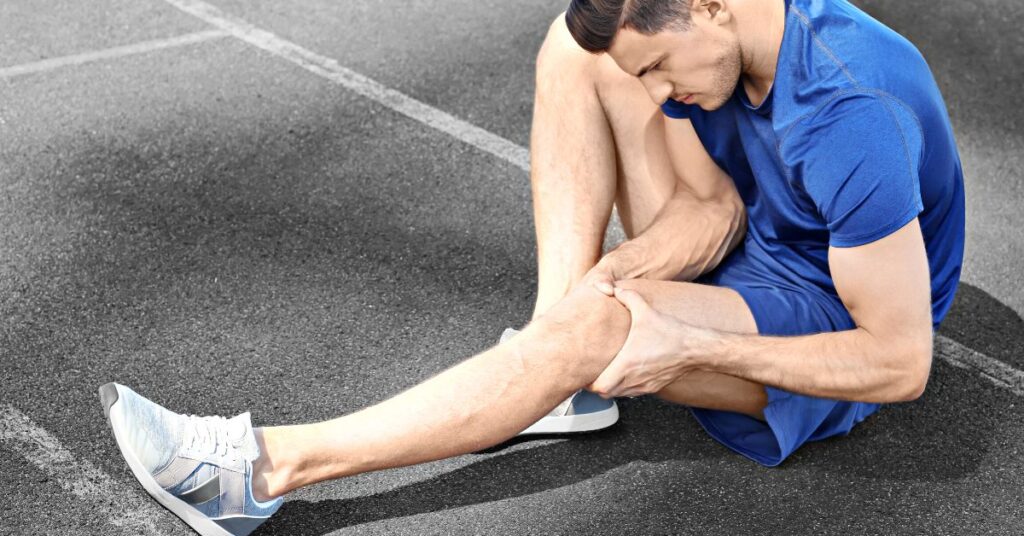Regular training brings many physical and mental benefits, and according to the Pallavi Bains, as well as numerous studies in the last decades, it can even increase your chances of living longer.
That is why it is of the utmost importance to exercise at least two to three hours a week.
However, muscle pain is one of the unavoidable side effects, at least occasionally.
We are here to help you and tell you more about ways to relieve muscle tension and pain after the workout.
Why do muscles feel sore after exercise?
Have you ever wondered why muscles are sore after lifting weights?
Although there are different theories regarding this topic as well as many conflicting opinions, we know that muscle damage, lactic acid build-up, and inflammation are the main reasons why we feel pain, tension, and a generally unpleasant feeling in the muscles.
The intensity and duration of soreness depend on many factors.
For example, eccentric forms of activity cause more intense muscle fever than concentric.
To make things clearer, the eccentric part of the exercise is when lowering yourself or weight down, while the concentric part is when you lift.
Fitness level, nutrition, and recovery routine also play an important role.
Also you have to learn to distinguish injury and typical muscle soreness in order to approach recovery appropriately.
How to make muscles recover faster?
The body tends to repair itself.
Even if you do nothing, the muscles will recover.
This also applies to strains and minor tears, not only to microscopic muscle damage after a workout.
Having said that, we can significantly speed up the process and make it more complete.
If we ignore recovery, especially after an injury, we risk the loss of muscle functionality, chronic pain, and even kidney damage in extreme cases.
How to relieve muscle pain after a workout is over?
There are two types of muscle soreness – acute also called immediate, and delayed onset muscle soreness (DOMS).
When we talk about the acute phase, stretching after finishing the workout is the best way to relieve tension and pain.
Passive stretching and cooldown will help you leave the gym quite relaxed.
Warming up is also important.
If you warm up properly before training, you will reduce the intensity of muscle soreness right after the workout is over.
How to get rid of sore muscles fast the day after a workout?
Delayed onset muscle soreness (DOMS) occurs 24 to 72 hours after performing an exercise, usually one that our body is not used to.
Whether you notice signs of DOMS or not, the following are the best ways to recover and you should incorporate at least a few into your routine before your next workout.
Keep in mind that strenuous workouts are not enough, but that everything you do before and after the workout has an equal impact on your overall fitness level and health.
Rest is paramount
Your muscles, bones, ligaments, and tendons are not the only ones that need rest.
The central nervous system is under a lot of stress as well, especially when you lift heavy weights.
If you fail to rest, you will not be able to generate enough force during the next workout.
Your movements will be weaker and slower.
Not to mention that the probability of injury will be many times greater.

Cryotherapy
Applying ice to an injury or sore spot is a well-known method.
However, it is nowhere near as effective as cryotherapy.
It can be whole body or partial.
Cryotherapy is a new type of treatment that includes exposure to freezing temperatures.
It is equally useful for recovery and temporary relief from the pain caused by chronic diseases such as arthritis as you can see in the article medically reviewed by Natalie Olsen, registered dietitian and exercise physiologists.
It is also recommended for those who suffer from migraine headaches, as well as certain skin diseases.
As Simon Cambers, freelance sports journalist, reported many professional athletes use this therapy, so cryotherapy chambers are now present at many sports facilities around the world.
Magnetic muscle stimulator
It has been proven that magnetic stimulation supports muscle and nerve regeneration.
That’s why the magnetic muscle stimulator should be part of your recovery routine.
Magnetic stimulation is not taxing on your muscles and joints.
It can be used in a wide variety of situations, including the treatment of fibromyalgia, stroke, and spinal cord injury.
Supposedly, this method can help you burn fat and reduce cellulite.
Food and hydration
A balanced diet should be the number one priority for every person.
Since proteins play a key role in the muscle repair process and the body needs carbohydrates and fats as fuel, what you eat when you are sore is essential.
Immediately after the workout and in the following days, increase the intake of all macronutrients, but make sure that the source of the macronutrients is healthy.
Fast food also contains a certain amount of protein, but the amount of salt, trans fats (trans-unsaturated fatty acids), and sugar is overwhelming.
Drink a liter of water per 25kg of bodyweight since your muscles need fluids.
Active recovery
You should not be bedridden just because you are experiencing DOMS.
One of the most effective ways to speed up recovery and ease your symptoms is active recovery.
Active recovery includes low-impact activities like:
- Cycling
- Swimming
- Yoga
- Power walking
- Active stretching
Massage and foam roller
Massage and foam rolling can be considered part of active recovery, but are worth mentioning separately.
Whether you decide on a professional deep tissue massage or use a foam roller for the same purpose, you will surely feel the tension leaving your muscles especially if you also apply topical creams before.
If you are looking for a cost-effective option, then buy a foam roller and use it regularly and go for a massage several times a month.
Over-the-counter (OTC) pain medicine
OTC pain medicine relievers, such as aspirin, and ibuprofen not only reduce and eliminate the pain but also reduce inflammation in our body.
Use them responsibly and in consultation with your doctor to get the most out of them without compromising your health.
How to get rid of sore muscles in legs?
Three of the five largest muscles are located in the lower body. That’s the reason why we feel more tired after a leg workout than after a chest day.
Fatigue and muscle pain will linger over the next few days as the body needs more time to recover.
You can take advantage of the above-mentioned ways to get rid of sore muscles in the legs too.
However, we have one more tip – a hot bath.
Warm water will expand blood vessels thus leading to better transport of nutrients and muscle relaxation.
Should you work out with sore muscles?
This is one of the most controversial debate topics in the fitness world.
While some advocate the theory that you should train with sore muscles, others are completely opposed to that theory.
We’re not the ones to put that debate to bed, but it’s definitely optimal to give your body at least one day to rest.
If you notice that it is not enough, rest some more.
And then you can go back to the gym, even if the soreness is still present because the muscles and connective tissues have most likely recovered enough that the training will not be counter-productive.
Why didn’t I experience muscle pain after training?
It is totally fine to be pain-free after training.
The absence of DOMS does not imply that you were lazy during the last workout, but that something called – specific adaptation to imposed demand happened.
As you progress, your muscles adapt to the new type of movement and eventually, DOMS will become a rare occurrence.
That’s why you should occasionally change something in your training regimen to avoid hitting a weightlifting plateau.

